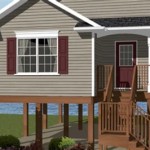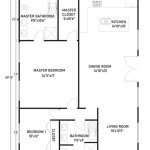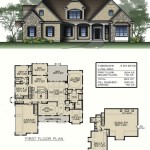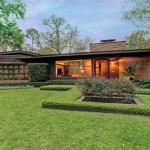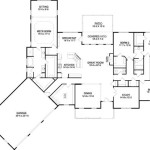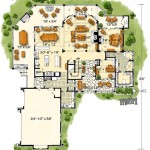Horse Barn Plans With Apartment: Combining Functionality and Lifestyle
Horse barn plans with an apartment offer a compelling solution for equestrians who desire to live close to their horses. This integrated design provides convenience, security, and the potential for significant cost savings compared to maintaining separate housing and stable facilities. Carefully considering the design, construction, and regulatory aspects of such a project is crucial for a successful outcome.
The appeal of a horse barn with an apartment stems from several key advantages. Proximity to the animals allows for constant monitoring, particularly important during foaling season, times of illness, or in climates with extreme weather. Furthermore, the ability to reside on-site can deter theft and vandalism, providing peace of mind. The arrangement can also simplify daily chores, reducing travel time and improving efficiency. Finally, a well-designed barn with apartment can increase property value and offer rental income potential.
Key Considerations for Design and Planning
Designing a horse barn with an apartment requires careful consideration of various factors, including local zoning regulations, the number and size of horses, the desired living space, and budget constraints. A detailed plan is essential to ensure functionality, safety, and compliance with building codes. The initial step involves checking with the local planning and zoning authorities to understand the permitted uses, setback requirements, height restrictions, and any specific regulations pertaining to agricultural buildings with residential components. These regulations can significantly impact the design and placement of the structure.
The size and layout of the barn itself must be determined based on the number and size of horses to be housed. Each stall should provide adequate space for the horses to move comfortably, lie down, and access food and water. The National Animal Care & Control Association (NACA) and similar organizations provide guidelines on minimum stall sizes for different breeds and sizes of horses. Additionally, the design should incorporate adequate ventilation to maintain air quality and reduce the risk of respiratory problems.
The apartment portion of the design must meet all applicable residential building codes and standards. This includes requirements for insulation, fire safety, plumbing, electrical systems, and accessibility. The size and layout of the apartment should be tailored to the specific needs and preferences of the occupants. Essential elements to consider include the number of bedrooms and bathrooms, the size of the kitchen and living areas, and the availability of storage space. Thoughtful planning is required to ensure that the living space is comfortable, functional, and aesthetically pleasing.
Separating the living space from the horse area is crucial to maintain hygiene and reduce noise and odor transmission. This can be achieved through physical barriers, such as insulated walls and sealed doors, and by implementing effective ventilation systems that prevent air from circulating between the barn and the apartment. Careful material selection is also important. Using durable, easy-to-clean materials in the barn area can help maintain cleanliness and prevent the spread of disease. In the apartment, materials should be selected for comfort, aesthetics, and ease of maintenance.
Budgeting for a horse barn with an apartment requires a detailed cost analysis that includes materials, labor, permits, and any necessary site preparation. It is advisable to obtain multiple quotes from qualified contractors and suppliers to ensure competitive pricing. Contingency funds should be included to cover unexpected expenses that may arise during construction. Investing in high-quality materials and workmanship can help ensure the longevity and durability of the structure, reducing the need for costly repairs in the future.
Essential Features and Considerations for Horse Comfort and Safety
The primary purpose of a horse barn is to provide a safe and comfortable environment for the horses. Several key features and considerations are essential to achieving this goal. Proper ventilation is paramount to maintaining air quality and preventing respiratory problems. Natural ventilation can be achieved through strategically placed windows and doors, while mechanical ventilation systems can provide supplemental airflow in areas with limited natural ventilation. The ventilation system should be designed to remove stale air, moisture, and ammonia while introducing fresh air into the barn.
Adequate lighting is also crucial for both horse and human safety. Natural light can be maximized through the use of windows and skylights. Supplemental lighting should be provided to ensure adequate illumination during periods of darkness or low natural light. LED lighting is a popular choice due to its energy efficiency, long lifespan, and ability to provide bright, consistent light. The lighting system should be designed to minimize glare and shadows, which can startle or disorient horses.
The flooring in the stalls and aisles should be non-slip, durable, and easy to clean. Concrete is a common choice for aisles, while various options are available for stalls, including rubber mats, wood shavings, and packed clay. Rubber mats provide cushioning and reduce the risk of injuries, while wood shavings offer good drainage and absorbency. Regular cleaning and maintenance of the flooring are essential to prevent the buildup of manure and urine, which can create unpleasant odors and promote the growth of bacteria.
Fire safety is a paramount concern in any horse barn. Implementing fire prevention measures is crucial to protecting the horses, the building, and the occupants of the apartment. This includes installing smoke detectors and fire extinguishers, maintaining electrical systems in good repair, and storing flammable materials in designated areas. Regular inspections of electrical wiring and equipment can help identify and address potential fire hazards. Developing a fire evacuation plan and conducting regular drills can help ensure that everyone knows what to do in the event of a fire.
The design should also incorporate features that promote horse safety and prevent injuries. This includes smooth, rounded edges on stall walls and doors, secure latches and hinges, and adequate spacing between stalls to prevent horses from kicking or biting each other. Fencing should be sturdy and well-maintained to prevent horses from escaping. Careful attention to detail can help minimize the risk of accidents and injuries.
Integrating the Apartment for Optimal Living
The design and integration of the apartment are critical for creating a comfortable and functional living space. Careful planning is required to ensure that the apartment is energy-efficient, well-insulated, and adequately soundproofed. Energy-efficient windows and doors can help reduce heat loss in the winter and heat gain in the summer, lowering energy costs. Proper insulation in the walls, roof, and floor can further improve energy efficiency and reduce noise transmission.
Soundproofing is particularly important to minimize noise from the barn area. This can be achieved through the use of sound-dampening materials, such as dense insulation and resilient channels, in the walls and ceiling. Solid-core doors and insulated windows can also help reduce noise transmission. Careful attention to detail can create a peaceful and quiet living environment, even in close proximity to the horses.
The layout of the apartment should be designed to maximize functionality and comfort. A well-designed kitchen can make meal preparation more enjoyable, while a comfortable living area provides a space for relaxation and entertainment. The bedrooms should be designed to provide privacy and a peaceful sleeping environment. Adequate storage space is essential for keeping the apartment organized and clutter-free.
Consideration should be given to the placement of windows and doors to maximize natural light and views. Strategic placement of windows can also help take advantage of passive solar heating in the winter. Outdoor living spaces, such as patios or decks, can provide additional areas for relaxation and entertainment. Landscaping can enhance the aesthetic appeal of the property and provide privacy.
Accessibility is another important consideration, particularly for individuals with mobility limitations. Designing the apartment with wider doorways, ramps, and accessible bathrooms can make it easier for people of all abilities to live comfortably. Universal design principles can be incorporated throughout the apartment to create a space that is both functional and aesthetically pleasing.
The integration of the apartment and the barn should be seamless, creating a cohesive and harmonious environment. This can be achieved through the use of complementary materials, colors, and architectural styles. Landscaping can further enhance the visual integration of the two structures. A well-designed horse barn with an apartment can provide a unique and rewarding living experience for equestrians who value the close proximity to their horses.

Horse Barns With Living Quarters Floor Plans

Horse Barns With Living Quarters Floor Plans

Horse Barns With Living Quarters Floor Plans

Horse Barns With Living Quarters Floor Plans

Horse Barns With Living Quarters Floor Plans

Barn Plans 4 Stall Octagon Horse Living Quarters Apartment

Plan 68995vr 3 Bed Barndominium Style With Second Level Living Quarters 1578 Sq Ft

Plan 95242rw Drive Through Barn With 4 Stalls And 2 Bed Apartment Above 1026 Sq Ft

5 Stall Horse Barn Plans With 2 Bed Room Apt Apartment

House With Barn Attached Any Pics Or Plans Around The Farm Chronicle Forums

